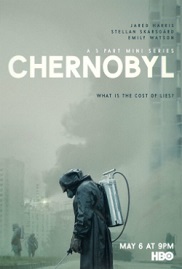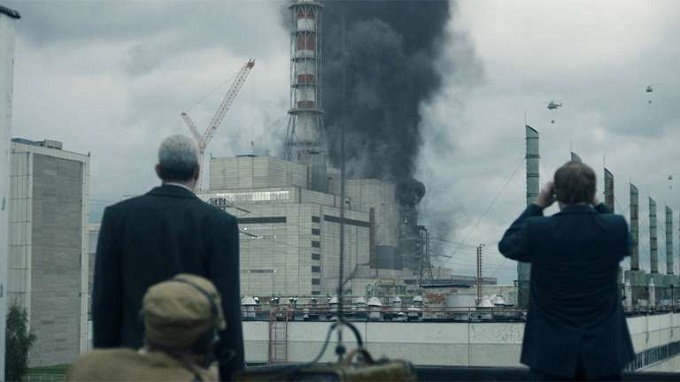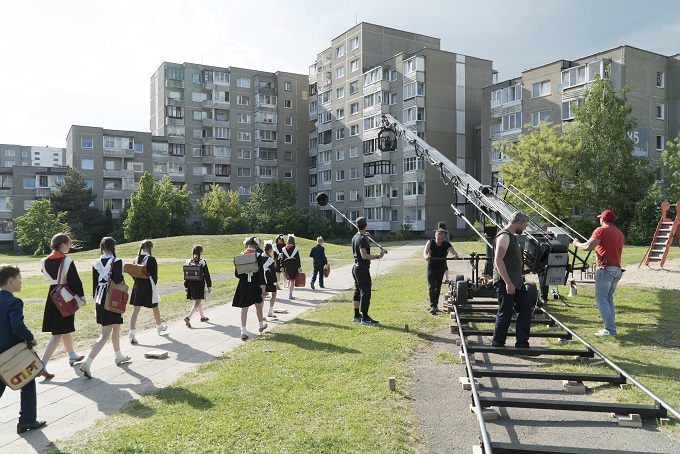|
The quaint old town has also been the location for the soon to-be-released Netflix’s The Last Czars, some of BBC’s War and Peace and HBO/Sky’s Catherine the Great and an Italian Anna Karenina.
Finding the perfect locations
One of the main tasks was to transform the areas back into the Soviet era. ‘They have become a part of Europe, they have come a long, long way and it was about going backwards and peeling things away,” the show’s creator Craig Mazin recounted to the press. The massive, destroyed reactor sets were built in a local film studio, but most of the action takes place in the city: 60 of the 88 days were spent filming in Vilnius, recreating the lives of the people and the lies their government told them.
Check out the most important locations here:
Start Your Journey....
1. Fabijoniškės – the infamous Pripyat
Staneviciaus St.
The City of Pripyat plays a very important role in the story. In just a short glimpse it clearly illustrates how the Soviet government treated its own people. The Fabijoniškės district in Vilnius built around the period of the actual catastrophe in the late 1980s was chosen as an ideal location. “It reflects the idea of Pripyat, of an idealised Soviet city of the future, quite wonderfully. Fabijoniškės is a symmetrical district, which is great for the current trend of translating the architecture of that era for the big screen: the forms are aggressive, there’s a lot of concrete and greyness,” says Jonas Špokas, CEO of Baltic Locations, the company that managed the filming locations for Chernobyl. The district was chosen because the crew wanted to show a young town where old trees couldn’t surround the apartment blocks.
2. Museum of Occupations and Freedom Fights – the KGB prison
Auku St. 2A
Currently one of the most-visited museums in Lithuania, this building was an actual KGB prison and still has its KGB cells and torture chambers intact. The original pieces of furniture where prisoners were held were used in the shooting of the series. “As we moved through it we were aware that there were the ghosts of history around us. They showed us these rooms, the kinds of torture that I would have never even contemplated,” says Mazin in the Chernobyl podcast.
3. Former cultural and sports centre of the Ministry of the Interior – Pripyat hotel restaurant
Žirmūnų St. 1E
Constructed in 1982, this building has kept some of its history intact. Authentic furniture, a coffee-maker on a bar, and the wall decorations make for an ideal cinematographic location. “I adore the building, even if we only used it to film the Pripyat hotel restaurant, and the scene where the three volunteer divers are selected,” says J. Špokas. The building is a beautiful representation of Soviet modernist architecture.
4. Vilnius Gediminas Technical University Faculty of Architecture – Courtroom
Trakų St. 1
One of the oldest streets of Vilnius is home to an 18th-century building that has become the perfect backdrop for the trial process, with halls reminiscent of the Soviet era. The witnesses of the Chernobyl disaster still remember that the trial was carried out in a hurry in a school hall. This building was once the Tishkevich Palace, but after World War II, it was turned into a college and is now a part of the university’s buildings.
5. Former government guesthouse – Pripyat hotel
Latviu St. 70
Situated in the green and relaxing district of Žvėrynas next to the Russian Embassy, this building was used to accommodate high-level Soviet officials visiting the country over a twenty-year period. Both the leader of the Soviet Union and Russian President Mikhail Gorbachev and US President resident Richard Nixon stayed here on their respective visits to Lithuania. The unchanged building served as an ideal location, reminiscent of the Soviet era and the meetings that took place within it.
Hilary Doling, Posted 06/06/19
|

 '
'






